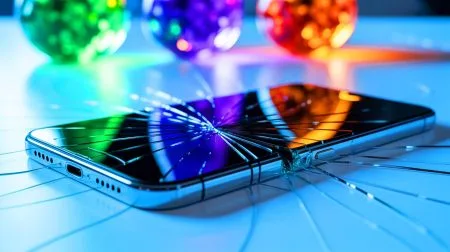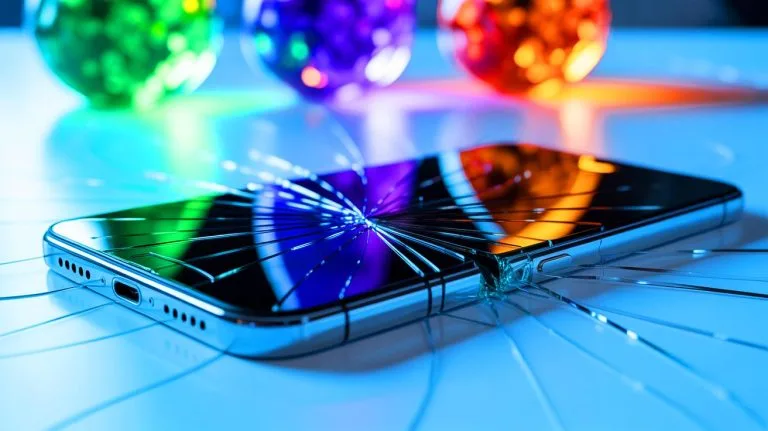| IN A NUTSHELL |
|
In a world where smartphones have become an essential part of daily life, it’s not uncommon to see devices with cracked or shattered screens. Many users, deterred by repair costs or simply procrastinating, continue to use their phones despite the damage. However, recent concerns raised by Dr. Jimmy Mohamed, a prominent medical figure, have sparked discussions about the potential health risks associated with damaged smartphone screens. Dr. Mohamed warns that cracked screens might release harmful substances, including cadmium, a known carcinogen. This claim has prompted an exploration into the legitimacy of these concerns and the actual risks involved with using a damaged phone.
Understanding Cadmium: A Toxic Heavy Metal
Cadmium is a heavy metal recognized for its high toxicity. Historically, it was widely used in rechargeable batteries, specifically nickel-cadmium (Ni-Cd) batteries, before being largely replaced by lithium-ion technology. Cadmium was also utilized in vibrant paint pigments, anti-corrosion coatings, and certain display technologies such as quantum dot screens using cadmium selenide.
The primary issue with cadmium is its persistence as a pollutant. It accumulates in both the environment and the human body, posing significant health risks. People are mainly exposed to cadmium through food, particularly cereals, leafy vegetables, seafood, and organ meats. Tobacco is another major source, as the plant naturally absorbs cadmium from the soil. The World Health Organization (WHO) classifies cadmium as a known carcinogen, highlighting its potential to cause chronic kidney damage, weaken bones, and damage lungs if inhaled. Due to these risks, its use is heavily restricted by regulations such as the European Union’s Restriction of Hazardous Substances Directive (RoHS).
Presence of Cadmium in Smartphones
While cadmium has been used in some electronic components, its presence in modern smartphones is minimal. The RoHS directive limits cadmium concentration in components to a maximum of 0.01%. Major manufacturers like Apple and Samsung adhere to these standards and emphasize compliance in their environmental reports. This means that the vast majority of modern smartphones are designed without cadmium.
There are exceptions, however. Certain display technologies, particularly first-generation quantum dot screens, used cadmium selenide to produce vivid colors. Even in these cases, cadmium is encapsulated within protective layers, preventing direct exposure. Thus, the likelihood of cadmium exposure from a cracked screen is extremely low.
Evaluating Dr. Jimmy Mohamed’s Claims
Dr. Jimmy Mohamed’s assertion that cracked screens release cadmium is largely unfounded in the context of modern smartphone technology. The primary risks associated with a cracked screen are mechanical—such as cuts from broken glass—and functional, as a damaged screen can lead to device overheating or malfunction. The notion that cadmium might be released through a cracked screen does not align with current manufacturing practices where cadmium, if present, is securely contained within internal layers.
In summary, while a cracked screen is inconvenient and potentially hazardous to handle, it does not pose a significant risk of cadmium exposure in everyday scenarios. Dr. Mohamed’s claims appear to be more of a sensational warning than a reflection of actual risk.
Practical Considerations for Smartphone Users
Despite the low risk of cadmium exposure, smartphone users should be mindful of the potential hazards of using a damaged device. A cracked screen can lead to injuries from broken glass, and malfunctioning components might cause the device to overheat. Regular maintenance and timely repairs are advisable to ensure both personal safety and the longevity of the device.
Users should also be aware of environmental concerns. Smartphones contain various materials that, if not disposed of properly, can harm the environment. Recycling and proper disposal of electronic waste are essential practices to minimize ecological impact.
In conclusion, while the fear of cadmium exposure from cracked smartphone screens may be overstated, users should remain vigilant about the general risks associated with damaged devices. How can individuals balance the convenience of technology with the need for responsible usage and disposal?
Did you like it? 4.6/5 (23)







